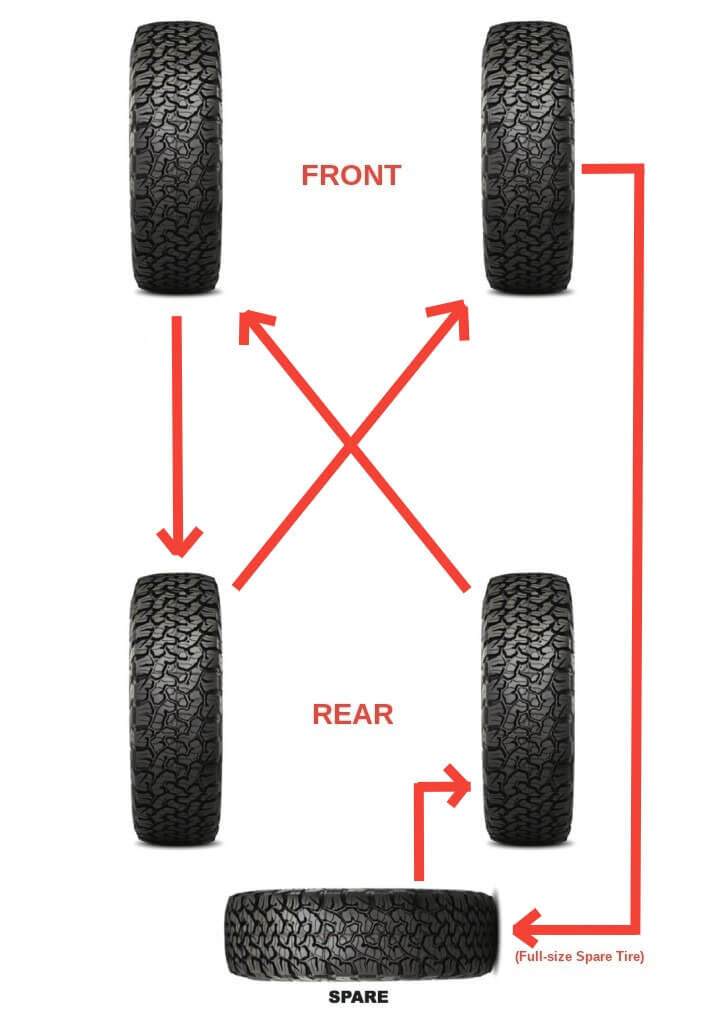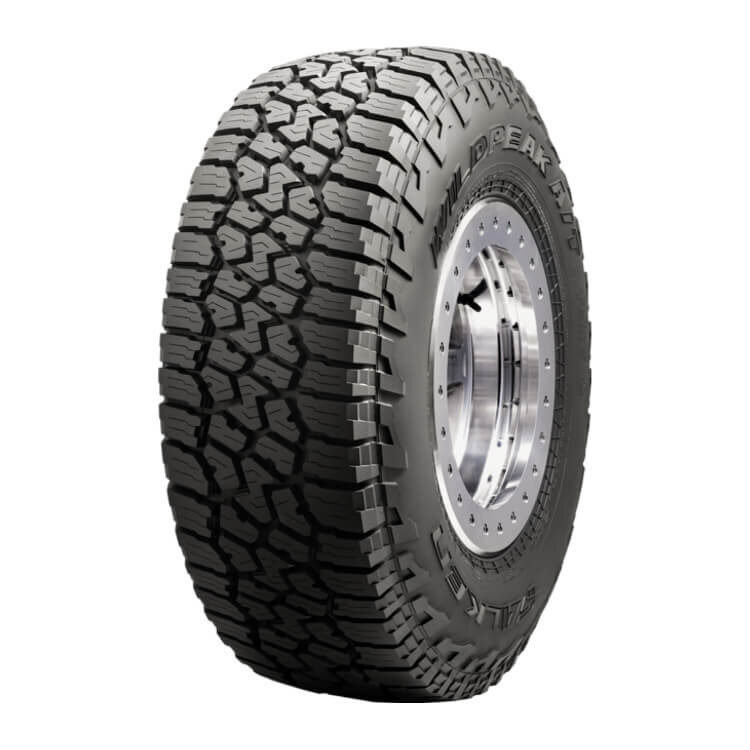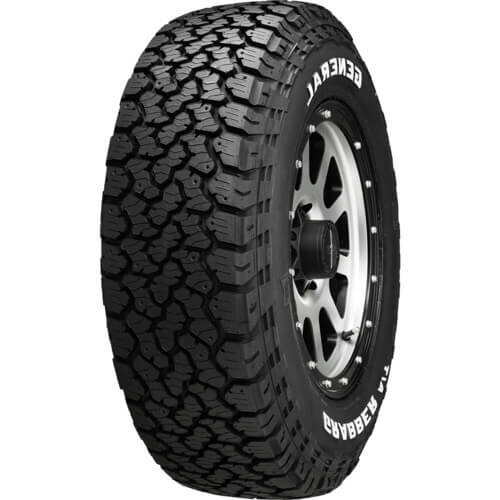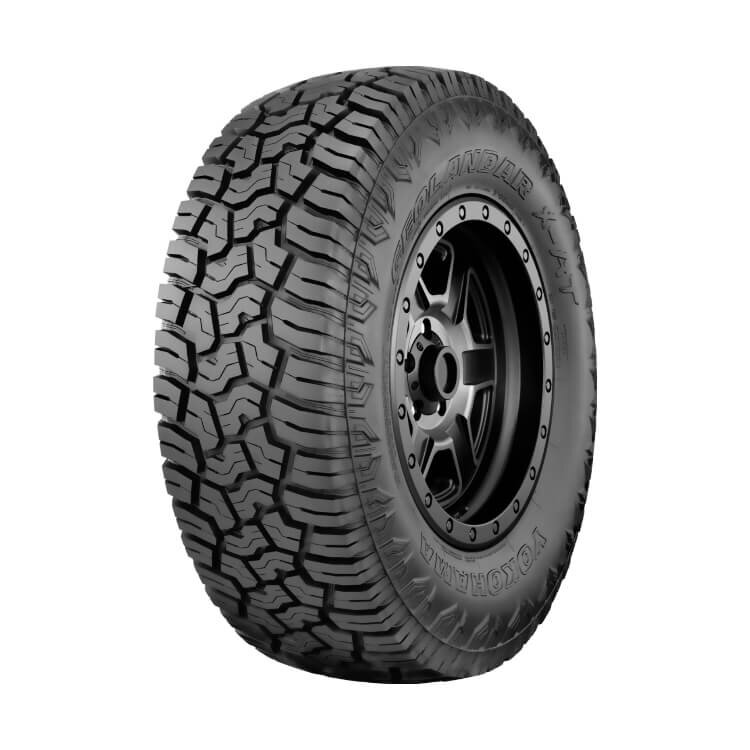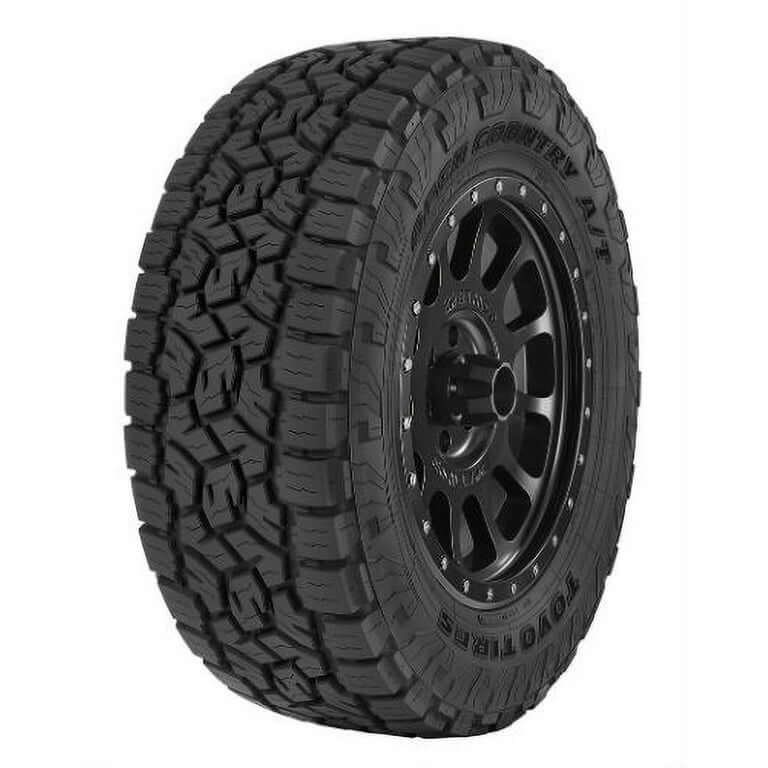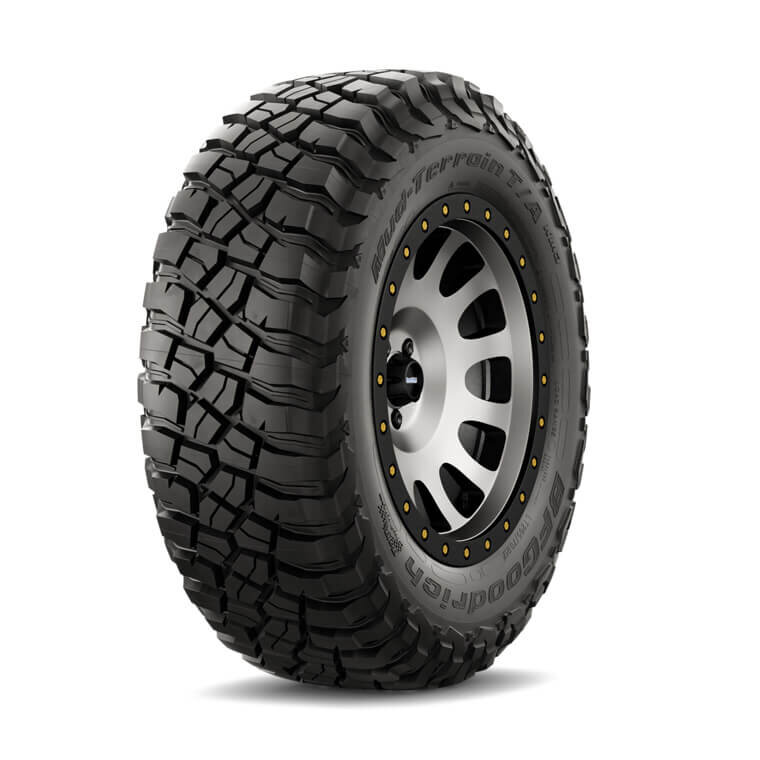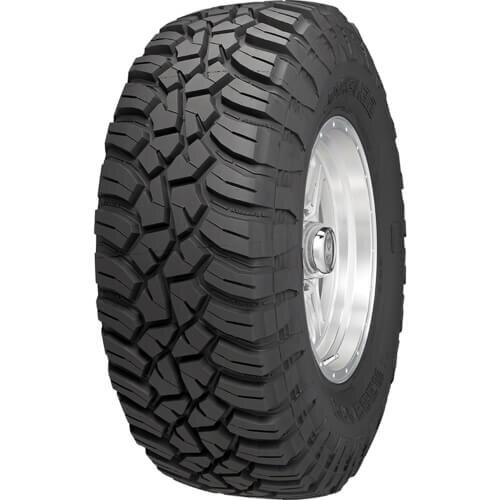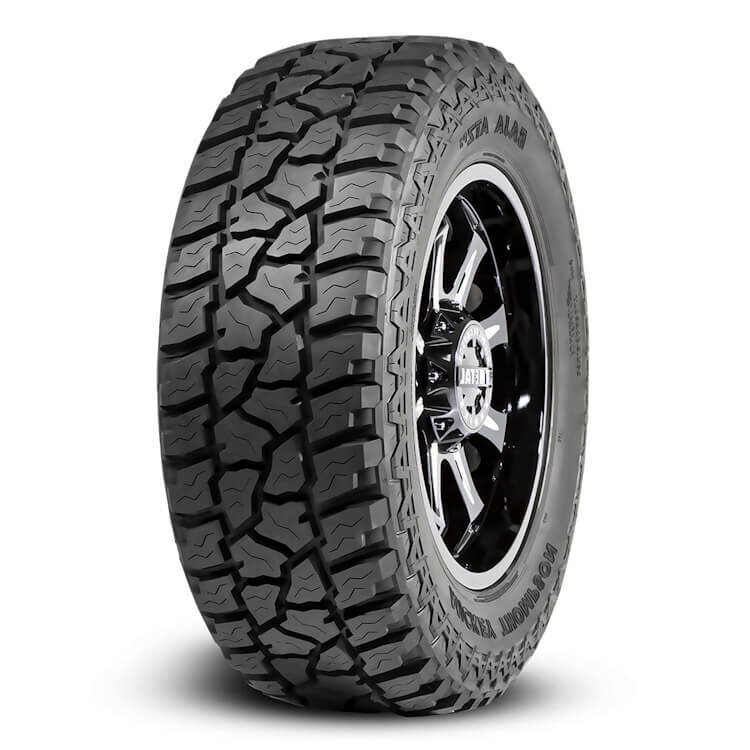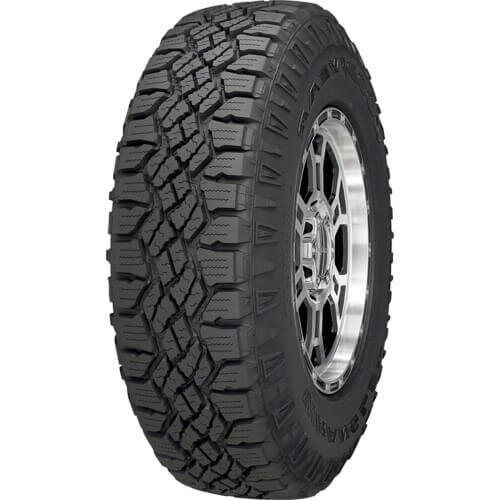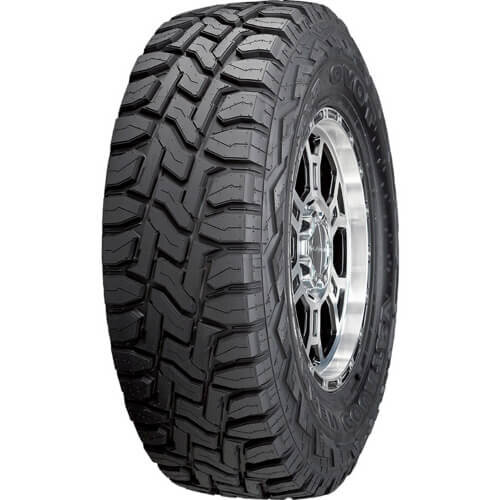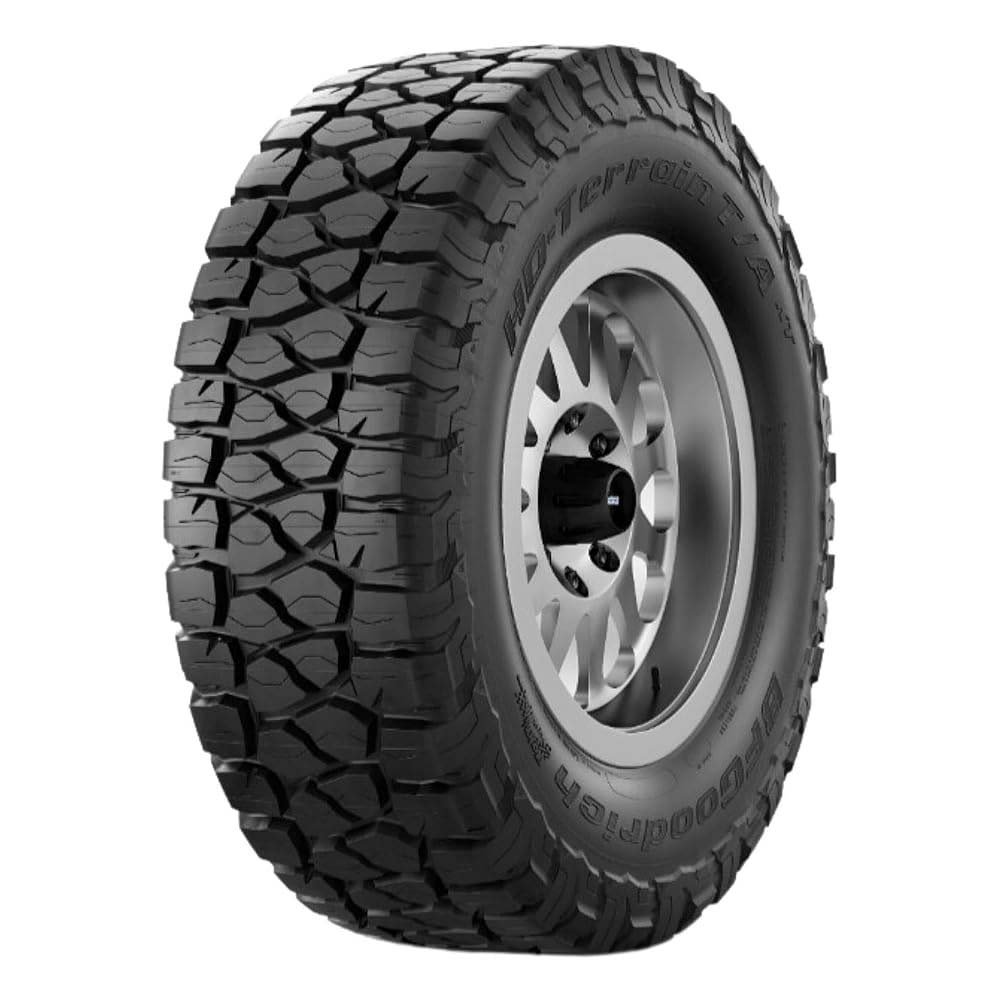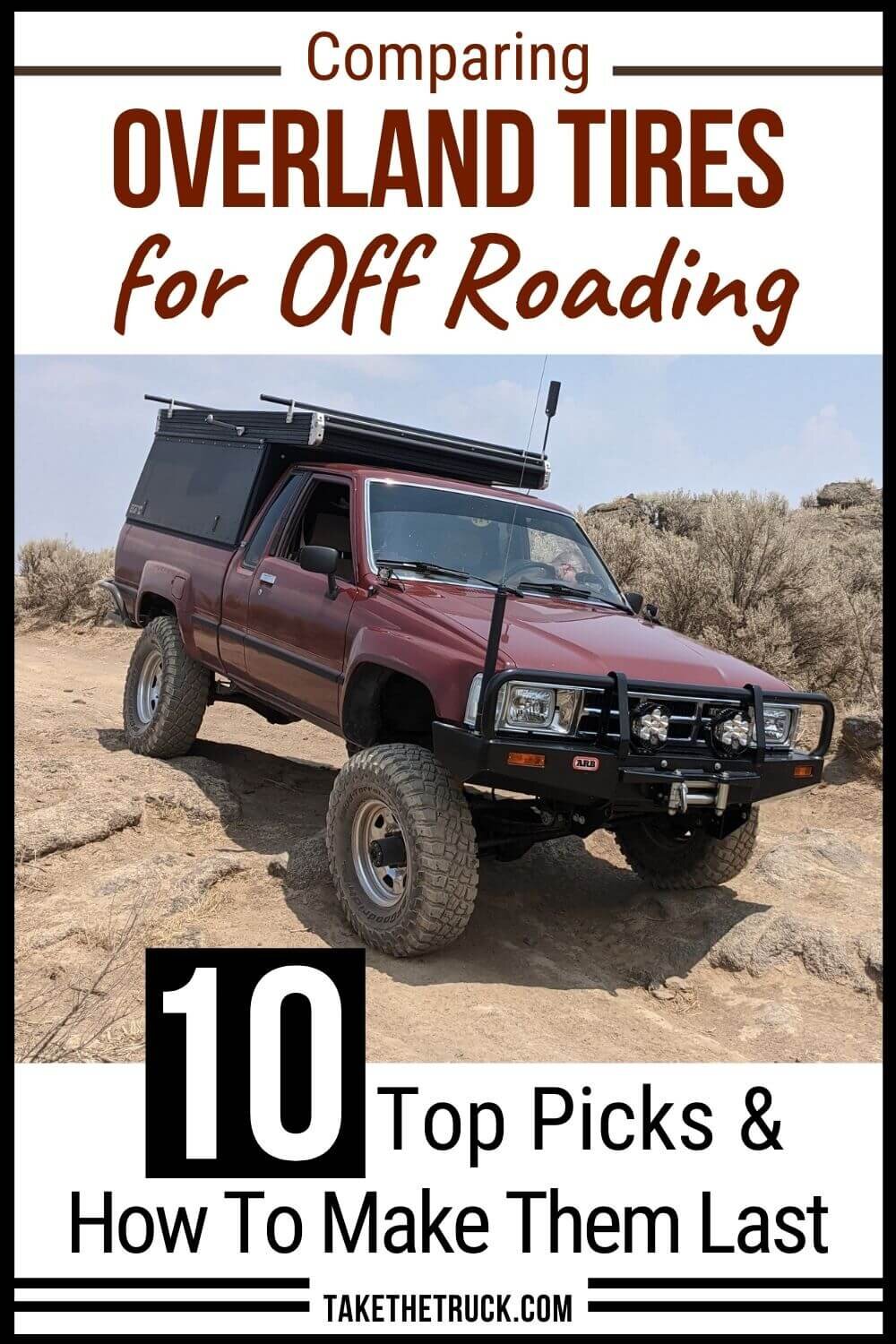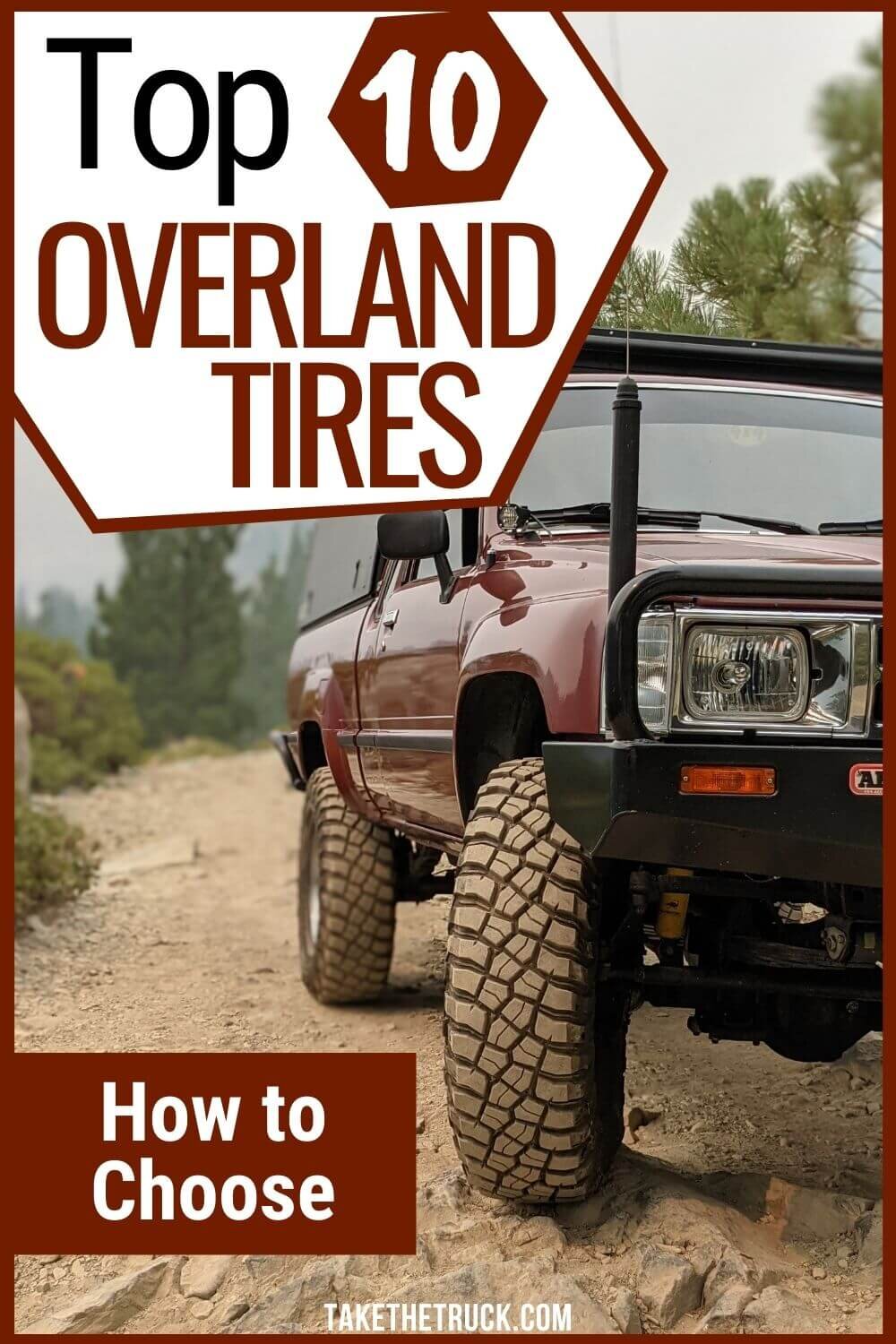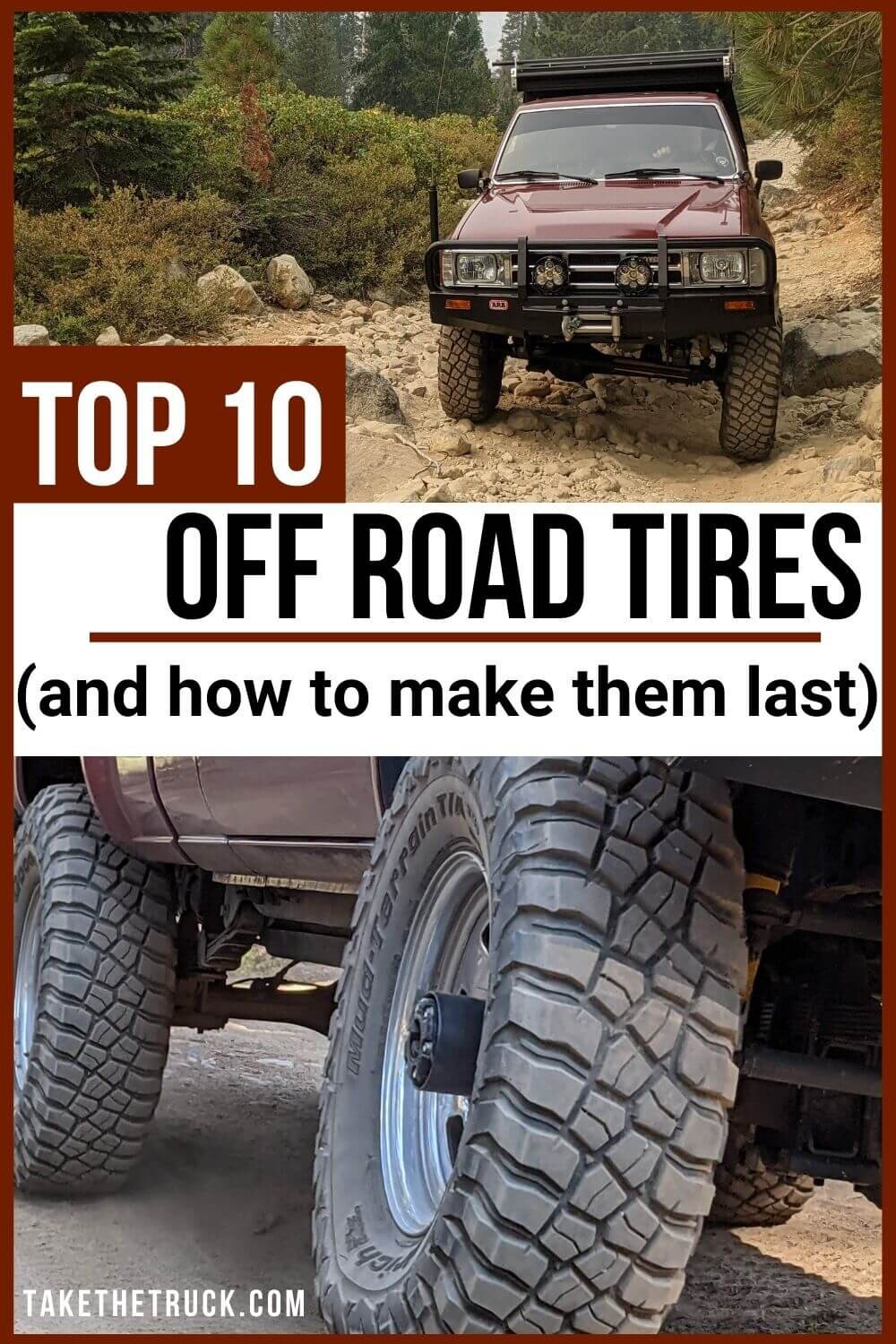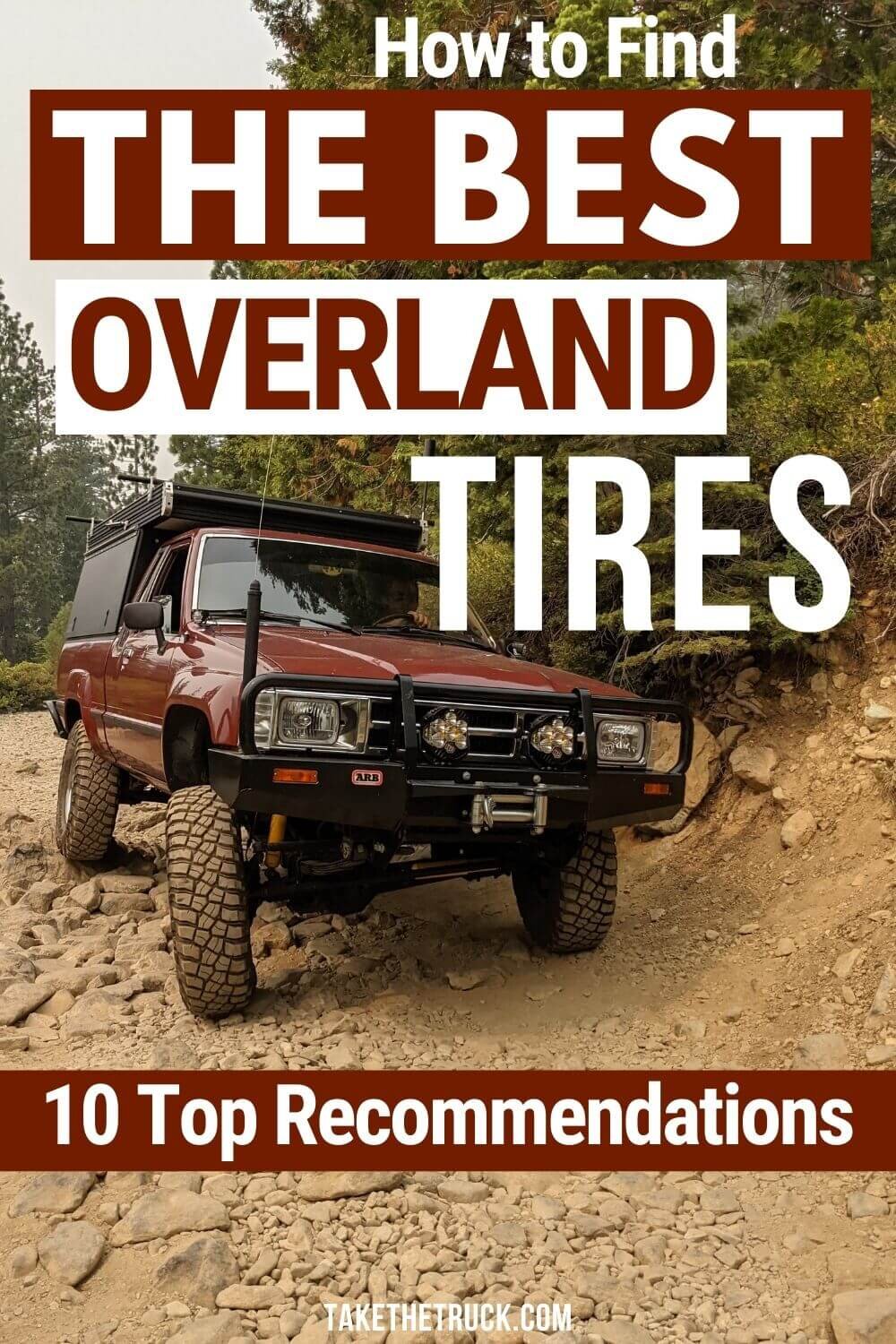How to Choose the Right Overlanding Tires
Tire choice is one of the most important aspects of an overland vehicle, because the entirety of your journey depends on them holding up to the rigors of off-road adventures.
So in this post, we’re going to cover everything you need to know to select the best overland tires for your vehicle, as well as give some helpful tips for maximizing their lifespan.
*(This post contains affiliate links. This means we may receive a small commission, at no additional cost to you, if you make a purchase through a link. See our full disclosure.)
Overland Tire Characteristics
Sipes
Sipes are the small grooves in larger tread elements that provide increased traction in mud, snow, ice, and rain - typically the more sipes the better the traction (up to a point, over-siped tires have increased wear and on-road performance issues). This is why we do not recommend the aftermarket tire siping services offered by some tire retailers.
Tread Blocks
Tread blocks are the raised sections of tread that make contact with the terrain and provide the traction patch or surface that your vehicle’s weight is distributed on.
Tread Grooves
Equally as important as the tread blocks are the grooves or valleys between them. Tread Grooves assist with cleaning during rotation (e.g. slinging mud or water) as well as gravel ejection.
Sidewall
The sidewall is the side of the tire that does not make consistent contact with the terrain. A taller sidewall makes for better traction results from airing down off road, and modern overland tires typically have a reinforced 2-ply or 3-ply equivalent strength to help improve performance and puncture resistance while aired down.
Ply
Early tires were built with multiple layers (or plies) of cotton fabric that provided their strength and load-bearing ability. Modern tires are no longer constructed this way but the term ply still refers to a tire’s equivalent load rating. Many light-truck tires (typically indicated by an LT abbreviation in their name) used for overlanding have modern load ratings stated as either B, C, D, E, or F which equate respectively to a 4, 6, 8, 10, or 12 ply-tire.
How to Determine the Best Overland Tire Size
Finding the best overland tire size for your rig will largely depend on three factors:
1. Your Overland Vehicle’s Tire Size Limitations
You’ll need to determine how tall or wide of a tire fits on your vehicle without interfering with steering components, rubbing on fenders, body panels or other components, or severely impacting wheel camber alignment - which can cause uneven and premature wear.
And while some of this can be overcome or corrected with suspension lifts and aftermarket components, you’ll want to determine your overland vehicle’s limitations before upgrading to a larger than stock tire size for overlanding.
2. The Type of Terrain You’ll Be Traversing
The type of terrain conditions you expect to encounter most often on your adventures will determine what height and width of overlanding tires may be most appropriate.
3. Gross Vehicle Weight
The gross weight of your fully-loaded overland vehicle needs to fall within the load rating of your overland tires - regardless of the size you choose. Check out our Definitive Guide to Overland Vehicles for help figuring out your gross vehicle weight.
Understanding Overland Tire Sizing
Tire sizes are typically listed in one of two ways.
The first is an off-road size designation that’s pretty easy to follow:
For example, a 33x10.50R15 tire (like the one we use) is broken down as follows:
33 = tire diameter in inches
10.50 = inches of tread width
15 = diameter wheel it’s intended to fit in inches
R - indicating that it is a radial tire
The second type of overland tire size identification is a metric measurement and slightly more complicated to discern:
For example, a 285/70R17 is broken down as follows:
285 = width of the tire in millimeters
70 = is the aspect ratio of the sidewall, or in other words, approximately how tall the sidewall of the tire is as a percentage of the tire width (70% of 285mm tire width = 199.5mm sidewall height)
R = again designates that it’s a radial tire
17 = wheel diameter (still in inches)
You may also see a two or three digit number (or letter) that corresponds to the load range of the tire (or load index). But you can usually find this information spelled out more clearly elsewhere on the tire along with the recommended tire pressure.
Tire Height
Running taller than stock tire heights while overlanding will improve ground clearance and provide more sidewall height for improved traction when aired down. Just keep in mind that switching to significantly taller tires than stock will negatively affect your overland vehicle’s performance and fuel efficiency - unless you regear your vehicle’s differentials to counter this.
Generally, most 4WD overland vehicles can accommodate a max tire height between 31” and 35” without impacting mechanics or performance significantly. However if you’re traveling in a smaller AWD or 2WD vehicle, it will likely be limited to much shorter tires in stock configuration.
Our Recommendation: Run what works for your adventures and your vehicle, and regear accordingly.
We found that 33” tires provide us with sufficient ground clearance for the majority of off-road driving we encounter, and then regeared our truck’s differentials to 4.88 gears to return the final drive ratio as close to stock as possible (in other words, overall performance and fuel economy is similar to stock).
The Great Narrow vs Wide Overland Tire Debate
The tire width debate has been raging for years amongst those in the overlanding community, with passionate arguments on both sides. But the reality is that it really depends on the type of terrain you traverse. Here's some advantages and disadvantages of each to help you decide what’s best for your adventures:
Narrow Overland Tires (aka “Skinnies” or “Pizza Cutters”)
Average Width: 7.5” - 9.5”
Pros
Lighter, lower rotational mass which places less strain on the engine and improves acceleration.
Longer contact patch which is good for rocky conditions.
They protrude less from the body of the vehicle, allowing you to fit through narrow sections of a trail more easily.
Typically better turning radius (relative to a wider tire of the same circumference).
Old-school utilitarian vibe
Cons
Narrower tires typically don’t perform as well in soft terrain conditions such as sand, snow, or mud.
Vehicle weight distribution is not as good, which can make handling feel more unstable with heavy loads (like when your vehicle is loaded down with gear, water, a camper, etc.)
More easily get pinned between rocks or in ruts that a wider tire would not
Wide Overland Tires
Average Width: 11.5” - 12.5”+
Pros
Better Flotation - They distribute the vehicle’s weight over a wider surface area making them more efficient in soft terrain conditions like mud, snow, and sand.
Generally handle weight better - A wider tire requires less tire pressure to bear the same weight as a narrower tire, so with a wider tire you can typically drive with a comparatively lower tire pressure on average.
They’re more forgiving of small potholes and stones
They just look more rugged and off-road capable
Cons
Heavier - The wider the tire, the more rotational mass, the more sluggish the vehicle will feel. This also places more strain on the engine, drivetrain, and steering components.
Too wide of a tire may require wheel spacers or modifications to your overland vehicle to accommodate.
Typically worse fuel economy (again due to the increased rotational mass)
Reduced turning radius (relative to a narrow tire of the same circumference)
Our Recommendation: Split the difference and go with a moderate width tire in the 10.5” (or 265-275mm) ballpark. Just make sure it is a relatively common size in the region you intend to travel so that you’ll be able to find a replacement when needed.
Selecting an Overland Tire Design: All-terrain vs. Mud-terrain vs. Hybrid
All-Terrain Tires for Overlanding
All-terrain tires are a great compromise between off-road and on-pavement performance, and covers a wide range of tread types.
Common Features:
Interconnected tread blocks for moderate off-road capabilities
Typically have siping in each tread block for better grip on smooth, wet, or icy surfaces
Good tread life
A quieter ride than more aggressive off-road tires
Pretty decent on-road handling and fuel economy
If your overland travels will be predominantly on-road with the occasional off-roading, all-terrain overland tires are a great choice.
Mud-Terrain Tires for Overlanding
Mud-terrain tires have been the de facto tire of the off-roading community. And they can provide excellent all-around performance for overland adventures.
Common Features:
Larger tread lugs with more space between tread blocks to grip soft terrain
These larger voids also allow for improved gravel ejection and clean out easily with a bit of wheel spin.
On-road handling is not as good as an all-terrain tire
Typically tread life isn't as long as an all-terrain (but this has gotten significantly better with technology and materials advancements - we personally got 50k miles out of our last set)
Increased road noise is also typical with mud-terrain tires (though this too has improved greatly in recent years)
Usually utilize thicker sidewalls (3-ply)
If you’re planning to travel in a region with a lot of soft terrain conditions like mud or sand, mud-terrain overland tires are a great choice.
Hybrid Overland Tires
A relatively new category of overland tire, hybrid tires attempt to bridge the gap between all-terrain on-road handling and mud-terrain off-road performance.
Common Features:
More aggressive side lug patterns with larger voids between the side lugs
Tighter tread pattern in the center to reduce road noise
More siping than a mud-terrain
Typically utilize 3-ply sidewalls for improved puncture resistance
If your overland travels will be predominantly off-road with the occasional paved sections, hybrid tires may prove to be the best overland tire for your adventures.
How to Get the Most Mileage Out of Your Overland Tires
Air Down When Driving Off Road
Airing down your overland tires when driving off road increases traction while decreasing tire-slip, which will reduce the wear rate over the lifespan of the tire. Properly aired down overland tires will also mold more easily to hazardous terrain (like jagged rocks), which will help keep tread blocks intact and avoid more serious damage or puncture.
For more info be sure to check out our detailed guide on How to Air Down Tires for Off-Road Driving and Overlanding
Rotate Your Tires
Rotating your tires on a regular basis will ensure they wear evenly and at a consistent rate. While the frequency at which you rotate your tires will depend on the type of terrain and driving you’re doing, a good general rule of thumb - especially when it comes to overland tires with more aggressive tread patterns - is to rotate your tires with every scheduled oil change (3-5k miles).
If you’re doing any off-road driving, it’s highly recommended to always carry a full-size spare tire and to use a 5-tire rotation pattern to ensure the spare is kept consistent with the rest of the drive tires as they wear.
Below you’ll find the 5-tire rotation patterns for overland vehicles with either front-wheel drive (FWD), rear-wheel drive (RWD), or 4-wheel driver (4WD) for reference:
Check Your Overland Vehicle’s Shocks & Alignment Regularly
Worn shock absorbers on your vehicle can create an inconsistent wear pattern known as “cupping,” where the tire’s tread blocks become unevenly pitched with high and low points.
Wheels that are out of alignment can shorten the life of your tires significantly and cause uneven tire wear patterns in which either the inner or outer tread wears at a faster rate than the rest of the tire.
Staying on top of shock absorbers and wheel alignment will greatly extend the life of your overland tires.
Treat Your Overland Tires with Tire Protectant
The rubber compounds in overland tires degrade through oxidation, ultraviolet radiation from the sun, and exposure to salts, solvents, and oils on roadways. To combat these things, you can treat your tires regularly with a tire protectant.
We’ve used 303 Aerospace Protectant* for years to protect our tires - as well as other automotive interior and exterior plastics - with excellent results.
Buy from a National Chain that Offers a Road Hazard Warranty
Overland tires are a big investment and when traveling for lengths of time off-road, inevitably you’re going to have tire damage that you need professionally repaired. We highly recommend sourcing your tires from a national chain that offers damage or hazard protection that will repair or replace a tire if it is damaged beyond repair.
With literally hundreds of locations nation-wide, we’ve been very satisfied with Discount Tire’s selection, prices, and service over the years.
Always Carry a Quality Tire Repair Kit
For those instances when repairable damage does occur, carrying a quality tire repair kit* will ensure you have the means to make it back to a professional repair facility.
The 12 Best Overlanding Tires 2025
While there are hundreds of overland tire options on the market, below you’ll find our current recommendations for the best all-terrain, mud-terrain, and hybrid overlanding tires to help narrow the scope of your search a bit:
Best All Terrain Overland Tires
Best Mud Terrain Overland Tires
Best Hybrid Overland Tires
We hope this guide helps you select the best overland tires for your adventures, and if you have any questions be sure to drop a comment down below.
If you’d like more helpful overlanding, truck camping, or family travel guides and tips, be sure to SUBSCRIBE for our blog updates.
As always, thanks for reading!
Related Posts:
Pin This Post!
We’d appreciate a share!



